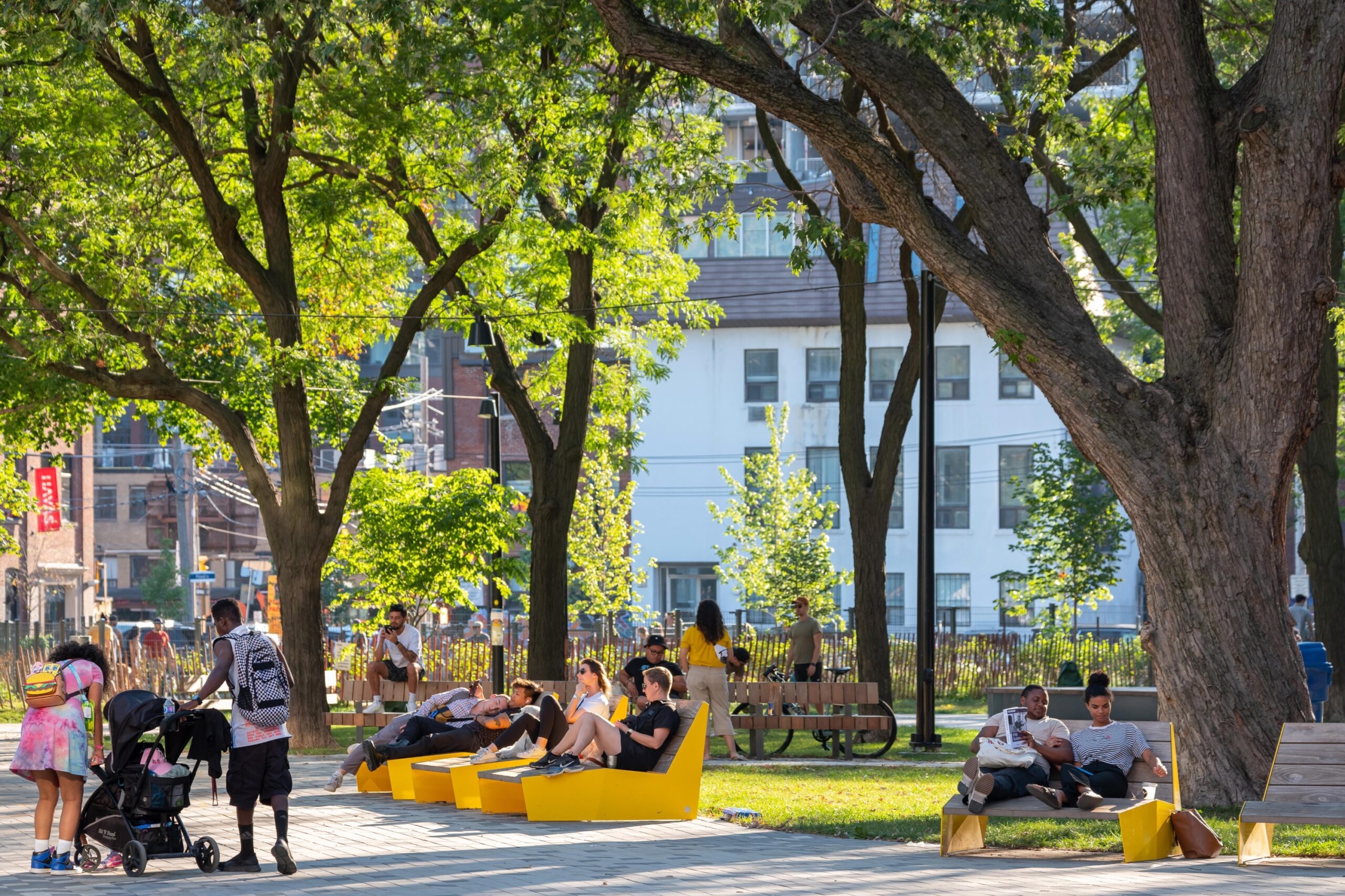On a late summer afternoon, the shade under St. Andrew’s Playground Park feels earned. As one of the few truly historic downtown Toronto parks still in active daily use, it continues to provide a meaningful pause in the city’s rhythm. A delivery cyclist pauses near the water fountain. A toddler tumbles down the slide, giggling, while someone nearby reads with their shoes off, toes brushing the grass. Dogs pass each other in elliptical greetings near the off-leash area. This patch of green, hemmed in by heritage brick and new glass, is more than a park. It’s a slow, grounding breath in a part of the city that moves fast.
But it wasn’t always this quiet. Before it became Toronto’s first public playground, before dogs and coffee cups and strollers, this corner at Adelaide and Brant was a marketplace. The year was 1837. The city, barely out of infancy, had designated this block as public land. It was one of the first acts of civic intention in what was then called the “New Town Extension.”
From Market Square to a Historic Downtown Toronto Park
By the mid-1800s, St. Andrew’s Market had taken shape here, third in line after the more famous St. Lawrence and St. Patrick’s markets. Its Renaissance Revival-style building housed a police station and a library alongside bustling produce stalls. The architecture alone signaled its civic ambition: brick, arched, substantial. Yet like many urban markets of the time, it was vulnerable to change. By the early 1900s, commerce had drifted elsewhere. The buildings were eventually razed in 1932, marking the end of its commercial era.
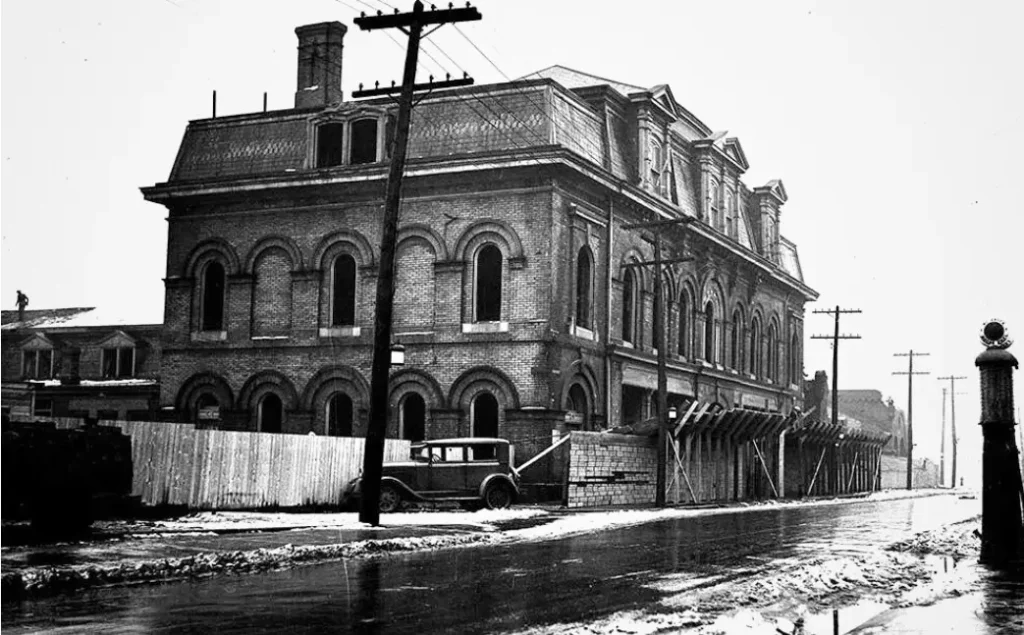
The southern edge of the site had already begun a quieter transformation. By the 1880s, locals had started treating it as informal parkland. In 1909, it was officially designated as Toronto’s first municipal playground. This was a progressive move at a time when urban childhoods were rarely considered in city planning. It set a tone. Green space was not just decorative. It was functional. Social. Necessary.
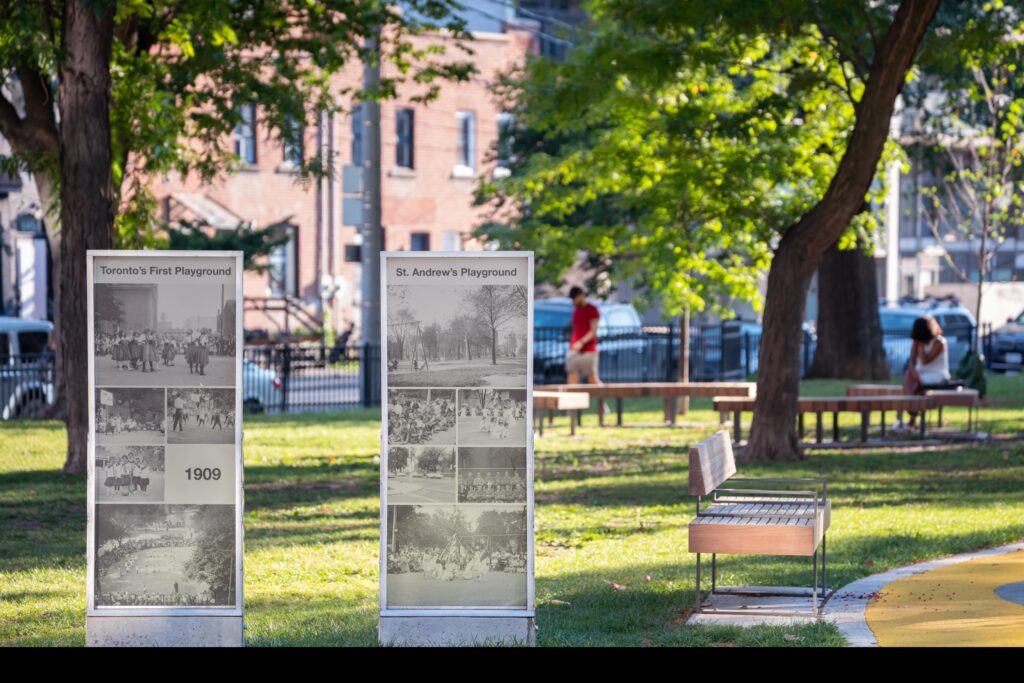
A Constant in a Changing City
Today, the neighborhood around St. Andrew’s Playground is dense and design-forward. King West has shifted over time, with industrial roots giving way to a nightlife scene, and now emerging as a walkable pocket where remote workers stretch their legs, dogs do their morning rounds, and cafés spill gently onto the street. The Waterworks Food Hall, which borders the park to the north, blends heritage facades with new purpose. It now includes housing, a food hall curated by Woodcliffe and MOD Developments, and a YMCA. It hums with life in a way that feels like a continuation rather than a disruption.
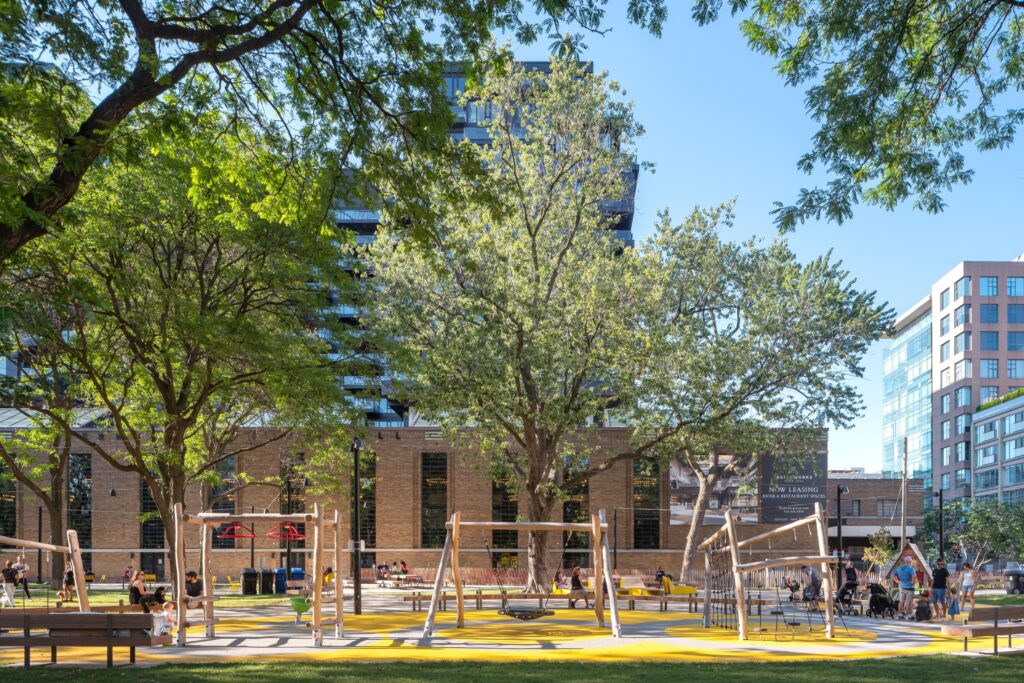
Just as striking as the architecture is the way the neighborhood uses its outdoor space. Mornings bring movement: bootcamp warmups, casual tai chi, dog-walking circuits. By noon, lunch-goers spread out under the tree canopy with sandwiches and laptops. In the early evening, the tempo softens again. Someone sips tea while flipping through a paperback. A child rides a scooter in gentle loops.
At the center, this small park continues to hold space.
A 2021 revitalization by Toronto-based DTAH brought thoughtful upgrades: integrated signage that nods to the market history, flexible gathering areas, and Indigenous placemaking elements that reflect the long pre-colonial presence on this land. DTAH led the landscape architecture in collaboration with Landscape Forms, whose furnishings and placemaking elements subtly support the park’s inviting rhythm. Their contributions include benches, lighting, and low fences that guide without instructing. Stone seating rings offer spots for quiet reflection. Pathways curve intentionally. Native plantings share the soil with towering, century-old trees.
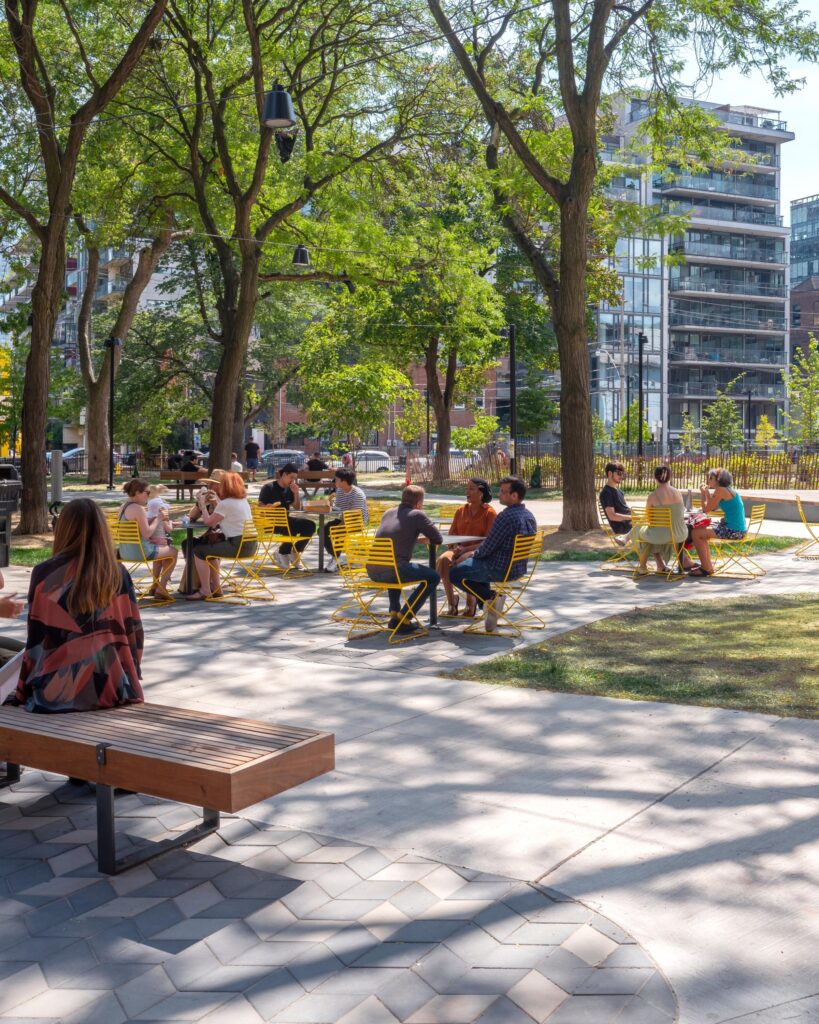
The revitalization also coincided with the adaptive reuse of the adjacent Waterworks Building. Once home to city maintenance and water services, the Art Deco structure was granted heritage designation in 2017. Its historical presence was preserved and integrated into the block’s next chapter. What had long stood as a utilitarian shell now contributes to the neighborhood’s public life through design, food, and fitness. The food hall alone draws a steady current of locals, many of whom drift through the park before or after visiting.
A Third Place, Rediscovered
Before its redesign, the park had begun to fray. It was overused and undercared-for, and for a time it served more as a placeholder than a pulse point. But something shifted. The reimagined space does not ask for attention. It earns it. You see it in the quiet rhythms of the day: weekday lunch breaks under the canopy, Saturday morning stretches beside the play structure, after-school chess games on the benches.
For locals, it has become a reliable third place. A civic living room tucked between morning routines and evening walks. It welcomes everyday rhythms without instruction. A dog run where neighbors pause and talk. A playground that echoes with movement and memory. And a grassy field that invites you to stay a little longer, whether with a coffee, a book, or nothing at all.
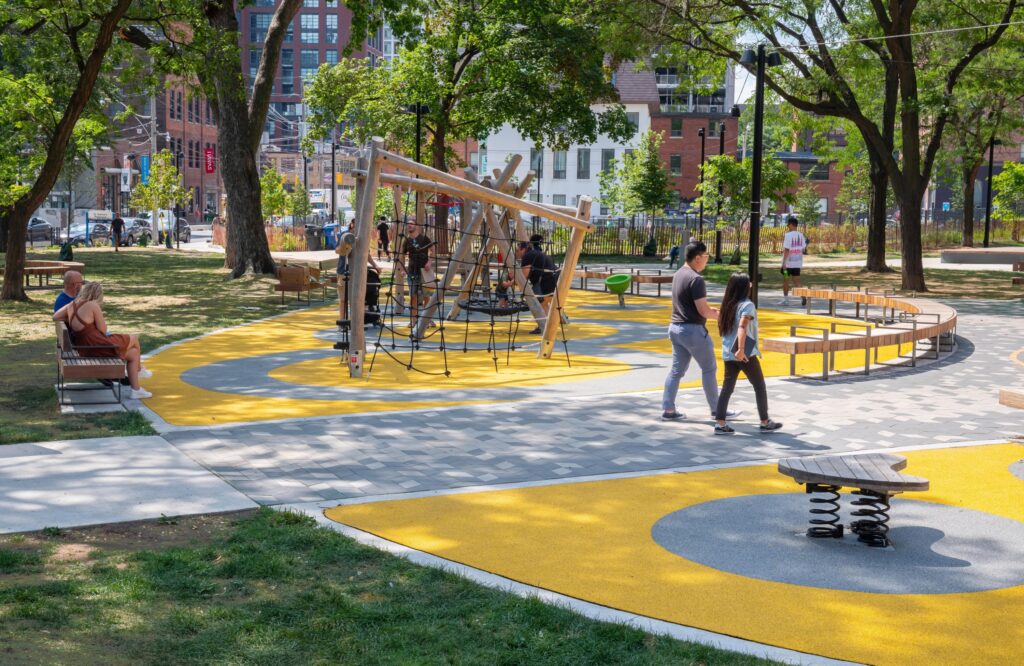
These layers of daily life, all unfolding in a space just one city block wide, reveal how public parks offer more than recreation. They host a neighborhood’s pace. They gather its memory. St. Andrew’s does both. It’s where morning coffees become impromptu conversations. It’s where evening strolls lead to spontaneous group hangs on picnic blankets. Programming or schedules are not required. The space adapts, quietly.
Why This Historic Downtown Toronto Park Still Matters
In a city that builds upward quickly and sometimes overlooks what came before, St. Andrew’s Playground Park offers a rare kind of continuity. It shows that public space can evolve while keeping its story intact. Heritage trees can shade new stories. Some of the most meaningful third places create lasting impressions without fanfare.
For those moving into the neighborhood now, especially those drawn by design-forward condos, coworking proximity, or King West’s wellness culture, the park offers a familiar point of connection. It’s where your dog meets your neighbor’s. It’s where you learn how the light falls at different hours. It provides a soft center in a high-density pocket. And it holds memory well.
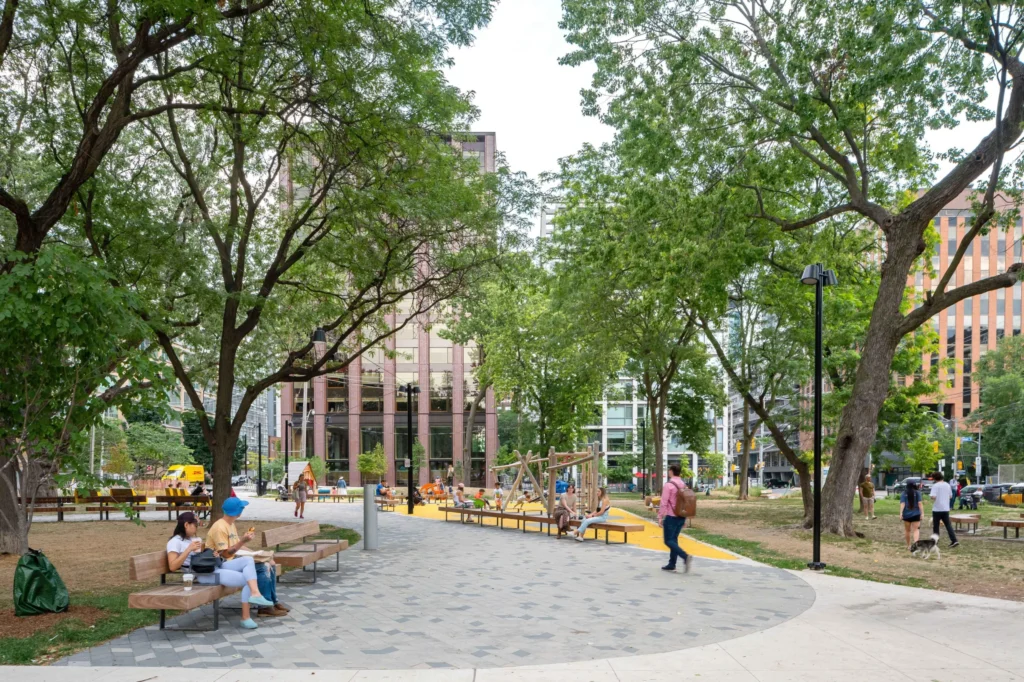
Come on a Tuesday. Or a Sunday. Or just walk by on your way to somewhere else. The park will be there, as it always has been: patient, green, and quietly essential.
Discover more around St. Andrew’s Playground Park:
Waterworks Food Hall: Breathing New Life into King West
From After-Hours to Infrared Saunas at King and Portland
The Ace Hotel Toronto: Redefining Toronto’s Third Place Culture
